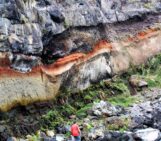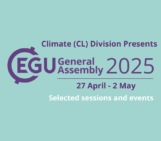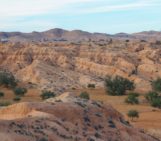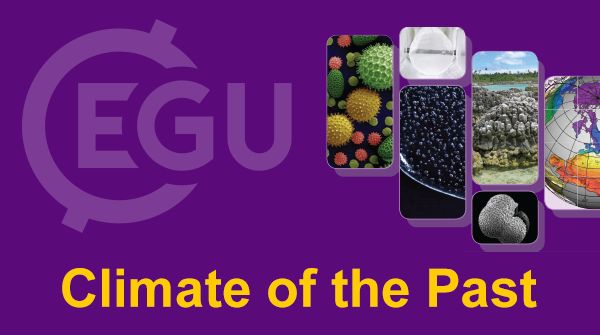
Twenty years ago, a small group of scientists set out to create a journal dedicated entirely to understanding Earth’s climate history. That journal, Climate of the Past (CP), was launched in 2005 as an international open-access journal of the European Geosciences Union (EGU), and over the past two decades it has become a cornerstone for the paleoclimate community. From geological eras to the last few centuries, CP publishes studies covering all timescales of climate change, including research articles, reviews, rapid communications, and opinion pieces. Topics range from ocean and atmospheric dynamics, ice and vegetation processes, and carbon cycles, to climate modelling and proxy development.
To celebrate this milestone, we sit down with Denis-Didier Rousseau, one of the journal’s co-founders and current co-editors-in-chief. We explore how the journal came to be, its vision and mission in a fast-paced scientific world where rapid publication is often demanded, and the editorial philosophy that guides it. We also look at opportunities for early-career scientists (ECS) who aspire to contribute to the editorial process in the future.
Meet the Editor Denis-Didier Rousseau
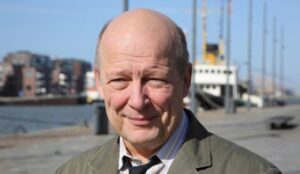 What is your scientific background and what initially motivated you to take on an editorial position in Climate of the Past?
What is your scientific background and what initially motivated you to take on an editorial position in Climate of the Past?
DDR: I have a background in geology and earned a Ph.D. in paleontology, studying the evolution of Quaternary land snails. I then transitioned to paleoecology and finally to paleoclimatology. My motivation was simple: I am one of the co-founders of Climate of the Past, along with Gerald Ganssen, Martin Claussen, and Eric Wolff. We wanted to create new support for paleoclimatology within the framework of the EGU’s new publication model launched early 2000s. Furthermore, in 2005, there were no publications exclusively dedicated to paleoclimatology; we were therefore double pioneers. But what could be more exciting than creating a new support for your community and witnessing its growth and seeing the increasing interest from your colleagues!
What aspects of your work as an editor do you find most rewarding, and which are the most challenging?
DDR: The most rewarding aspects are having direct contact with the authors, receiving their gratitude for our help with handling their work, and seeing them submit to the journal again. The most challenging aspect is that we are authors as well. Therefore, replying in a timely manner to prevent the authors and reviewers from wasting time is extremely challenging. Missing deadlines is considered as a serious failure. As co-editors-in-chief, resolving conflicts of interest is also challenging and must be handled very seriously.
How do you see the role of an editor evolving in today’s rapidly changing scientific landscape?
DDR: Contrary to popular belief, an editor is not a censor. Rather, an editor is a helper. The editor’s role is to ensure that the best papers are published and that authors have received the best advice, comments or feedback possible.
About the Journal

Climate of the Past recently celebrated its 20th anniversary. What distinguishes it from other journals in the field of palaeoclimate or Earth system sciences, and what kinds of studies are particularly encouraged?
DDR: Since its launch, Climate of the Past has been fully open access, making it a pioneer in this field with respected editors covering the four main domains which are equally represented among the journal leadership. As the journal’s name, “Climate of the Past” suggests, we publish all papers related to past climates, from the recent past to the distant past, including exploratory studies, reviews, and EGU medalist papers, the latter compiled in a permanent special issue.
The journal is running a webinar series to celebrate its 20th anniversary. Could you tell us more about the idea behind it and what participants can expect from the upcoming sessions?
DDR: The idea behind the webinars is to celebrate this particular milestone in a different way over the course of a year, especially by involving the editorial board and the community who make the journal successful. The editors are co-conveners of the different sessions and select the speakers. The community is involved through the speakers, who are not mainly editors, and through attendees who ask questions openly. Each webinar’s topic relates to those addressed by the journal. Since we want to engage the global community, we acknowledge that the timing may not always be convenient for everyone. However, all webinars are recorded, including the talks and the subsequent Q&A sessions.
The upcoming sessions will address successively:
- Impact of Past Climate Change on Ecosystems and Human Societies, 19 November 2025. Register here
- Ocean Circulation and Climate Change, 25 November 2025. Register here
- Polar Climate History, 14 January 2026
- Monsoon Variability, 11 February 2026
- Volcanism and Climate, 19 March 2026
- Paleoclimate of Extreme Events, 8 April 2026
In addition to this webinar series, we held a celebration during the 2025 General Assembly. We also compiled with Copernicus all the medalist papers published in CP at the time of the celebration in a professional PDF, which is freely accessible at https://cp.copernicus.org/articles/special_issue24.html
Behind the Desk: Editorial Perspective on Publishing
From an editorial perspective, what are the three most important things authors should keep in mind when submitting a paper to Climate of the Past?
DDR: For me, these are:
(1) Climate of the Past is fully open access.
(2) it offers authors a discussion phase that allows for open interaction with the reviewers and the community.
(3) editors act as helpers, not judges.
How do editors balance the need for rapid scientific communication with maintaining rigor and thoroughness in the peer-review process?
DDR: The first criterion is scientific merit. Editors stay alerted as much as possible about the papers they handle. If a deadline is missed for any reason, the system immediately sends the editors reminders, and alerts the co-editors-in-chief for a prompt response. However, it is important to always keep in mind that we are all volunteers with other academic or personal activities that could distract our attention.
Finding reviewers has become increasingly difficult across the scientific community. How is this challenge addressed at Climate of the Past?
DDR: As with all journals, this is challenging for CP editors. There are many ways to invite reviewers: through their own networks, an option I am always recommending, the different databases or tools that Copernicus provides, or even the names proposed by the authors. However, knowing names does not guarantee success in nominating reviewers.
Climate of the Past has always been open-access and not-for-profit. Why is this aspect important for the journal and for the scientific community?
DDR: CP is a member of the EGU Publishing Portfolio and aligns with the EGU’s publishing philosophy. It is a pioneer in open-access publishing, with a unique model. During the open access discussion phase, the community can comment on and discuss papers but also the reviews. Thus, they can contribute to the scientific quality through non-anonymous comments. These discussions are always moderated by the handling editor or one co-editor in chief and can lead to stimulating exchanges.
Early-Career Scientists and Editorial Engagement
How can ECS become involved in journal editing or contribute to the editorial process?
DDR: In general, we appoint a new editor either to replace an outgoing editor, in which case we consult the editorial board and different networks to look for potential scientific profiles, ECS or more established, or because we are looking for new expertise in fields that have not yet been developed in the journal.
What skills or experiences would you recommend ECS develop if they aspire to an editorial role in the future?
Ideal candidates have i) published a certain number of papers as a lead author, and ii) accepted invitations to review papers or even proposals.
Many early-career researchers face pressure to publish quickly to meet graduation or job requirements. What would you recommend in cases where time constraints clash with the peer-review process?
DDR: This is a tricky question, and my answer is biased by my own experience, but I would say try to strike a proper balance between these sometimes conflicting goals, if possible.
Equity, Inclusion, and Accessibility
How does the journal account for differences in resources and expertise among authors to help reduce structural inequities in science?
DDR: Papers submitted to CP are assessed based on scientific merit, not the laboratory or institution to which the authors are affiliated, in order to address structural inequities in science. Like all EGU journals, CP has a limited number of waivers to support authors who cannot afford the APCs, either partially or fully. Lastly, the co-editors in chief are always keen to discuss submissions with authors seeking advice or assistance. This is their duty.
How does the journal address the issue of high publication fees that may prevent some authors from submitting their work? particularly for researchers from economically disadvantaged regions?
DDR: The EGU has decided to waive the publication fee for EDR. As co-editors-in-chief, we have a certain amount of euros with which to waive the fee for papers that we offer or assign to authors. Additionally, Copernicus has signed several institutional agreements with libraries and universities to support APCs.
What is the journal’s broader vision for lowering barriers and promoting equity and inclusion in scientific publishing?
DDR: We strive for gender and career balance on our editorial board. Furthermore, we are working hard to include representatives from different continents on the board, though we have not yet fully succeeded. This is a constant consideration of the co-editors in chief, however.
This post has been edited by the editorial board.

